Same game multi bounty hunt
with a 40 000 usd prizepool!
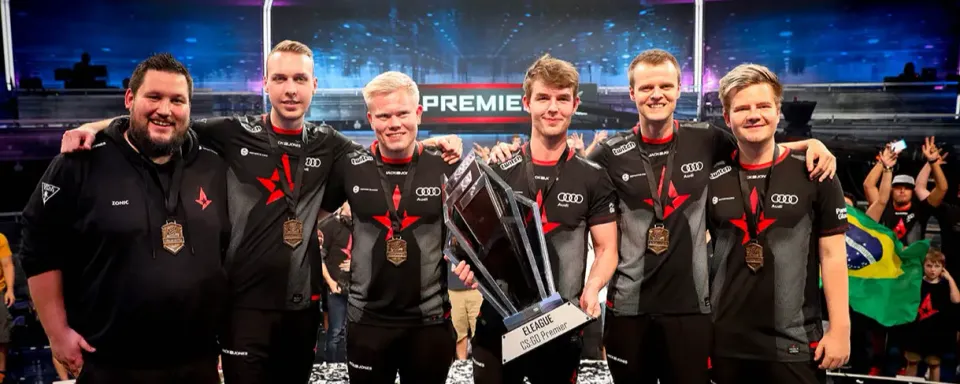
Counter-Strike majors are the ultimate showcase of competitive esports, delivering heart-pounding moments, stunning comebacks, and legendary performances since the debut CS:GO Major in 2013. From the early days of CS:GO’s evolution to the cutting-edge CS2 era, these tournaments have crowned champions and MVPs who’ve forged the game’s storied legacy. This article provides an in-depth exploration of every Major final, detailing winners, runners-up, MVPs, match scores, maps, pivotal plays, and prize pools, honoring Counter-Strike’s rich history.
The first CS:GO Major was different from the current one. CS 1.6 veterans were reluctant to switch to the new version of the game, which was far from perfect. Since then, only four clubs have remained in CS:GO: NAVI, NIP, Complexity, and Fnatic. The latter became the champion of the first Major, and the MVP title went to Jesper “JW” Veksel. He, like many other Swedes, initiated the dominance of the Swedish scene.
Major opened with a thrilling three-map showdown between Fnatic and NiP. Dust II saw Fnatic edge out a 16-14 victory, with JW’s bold AWP plays on long and cArn’s precise molotovs disrupting NiP’s СT-side rushes. NiP retaliated on Inferno, clinching a 16-12 win, fueled by f0rest’s multi-kill B-site takes and GeT_RiGhT’s AWP dominance on banana. The decider on Train went to Fnatic 16-2, with JW’s sniper duels against f0rest and znajder’s clutch situations under pressure from NiP’s late push, marking the birth of Swedish dominance.
The Poles from Virtus.pro, including the legendary Jarosław “pashaBiceps” Jarząbkowski, a favorite of the CS:GO community, made a splash at the first Major, where stickers attracted a lot of attention and eventually began to cost tens of thousands of dollars, starting a new trend.
In Katowice, Virtus.pro confidently defeated NiP with a score of 2:0. Mirage began with a 16:9 rout, where pashaBiceps was the star of the tournament, and TaZ's disciplined rotations dismantled NiP's aggressive T-side. Inferno continued with a 16-10 victory, where pasha caught NiP off guard at site B, and neo ensured dominance on the map by controlling the middle. The overwhelming support of the Polish crowd turned this into a historic home triumph, and NiP was unable to withstand Virtus.pro's persistence.

NiP broke their Major final curse in a 2-1 nail-biter against Fnatic. Cobblestone ended 16-11 for NiP, with friberg’s tactical rotations outsmarting Fnatic’s aggressive pushes and GeT_RiGhT’s AWP control on long holding firm. Fnatic fought back on Cache, winning 16-8 with flusha’s deceptive fake actions and olofmeister’s site entries, but NiP sealed Inferno 16-13, driven by friberg’s leadership in T-side executes and f0rest’s clutch retakes, ending a long drought.
ESL Cologne 2014 was remembered that NIP, the record holder for the largest win streak at LAN tournaments, took first place at the major, having been to the previous two finals. The MVP then became Adam “friberg” Friberg, who played on the pro stage until 2022.
Following the Poles and Swedes, the French representatives from LDLC, including Richard “shox” Papillon, Fabien “kioShiMa” Fieux, and Nathan “NBK” Schmitt, added their nicknames to esports history. But the main star of the tournament was Vincent “Happy” Schopenhauer, one of the best lurkers in CS:GO for the entire game's existence.
LDLC delivered a 2-1 upset against NiP. Dust II saw a 16-10 LDLC win, with Happy’s lurking on CT side snagging critical rounds and shox’s rifling keeping NiP’s offense at bay. NiP responded on Inferno, taking it 16-4 with f0rest’s AWP dominance and Xizt’s strategic pauses, but LDLC clinched Overpass 16-19, thanks to Happy’s treacherous game at B-site and kioShiMa’s support fire, signaling a French breakthrough.
Only two years have passed, and CS:GO got the first organization to take the "gold" of the major twice. On the other hand, NIP became a finalist for the fourth time, having already lost the third match for the title.
Fnatic etched their name in history with a 2-1 win over NiP. Dust II fell 16-14 to Fnatic, with olofmeister’s aggressive A-site rushes and flusha’s fake action throwing off NiP’s defense. NiP fought back on Cache, winning 16-10 with GeT_RiGhT’s multi-kills, but Fnatic dominated Inferno 16-13, driven by olofmeister’s site takes and JW’s long control, securing their second Major crown.

At ESL Cologne 2015, the organizers changed the usual group stage format with four GSL groups for the first time, reducing their number to two but dividing the stage into two parts. Fnatic became the champions again.
Fnatic swept EnVyUs 2-0 in Cologne. Dust II ended 19-15, with flusha’s phenomenal game and JW’s AWP duels disrupting EnVyUs’ T-side, while Cobblestone concluded 16-7, driven by flusha’s entry frags and olofmeister’s support, marking Fnatic’s third Major win with a revamped two-group stage format.
Until the AWP nerfs, Kenny “kennyS” Shrab was the most spectacular sniper in CS:GO and gave a lot of highlights at that time. Quite naturally, he became the MVP of the major.
EnVyUs outlasted NAVI 2-0. Train went 16-14, with kennyS’s AWP headshots and apEX’s mid-control breaking NAVI’s defense, while Cobblestone finished 16-5, thanks to Happy’s lurking and shox’s rifling, cementing kennyS’s MVP status and apEX’s first Major title and repeated this achievement at home in Paris.
In CS 1.6, Brazilians were one of the strongest esports nations, but in Global Offensive, the country failed to succeed. And that time, NAVI opposed them with Ladyslav "GuardiaN" Kovac, who were considered favorites. Until the very final, they were unbitable. But, in the main bo3, the Ukrainian club was defeated.
Luminosity shocked NAVI 2-0. Mirage ended 17-19, with coldzera’s T-side entries and FalleN’s crosshair placement dismantling NAVI’s setup, and Overpass ended in disaster 16-14, marking Brazil’s first Major breakthrough against the odds.
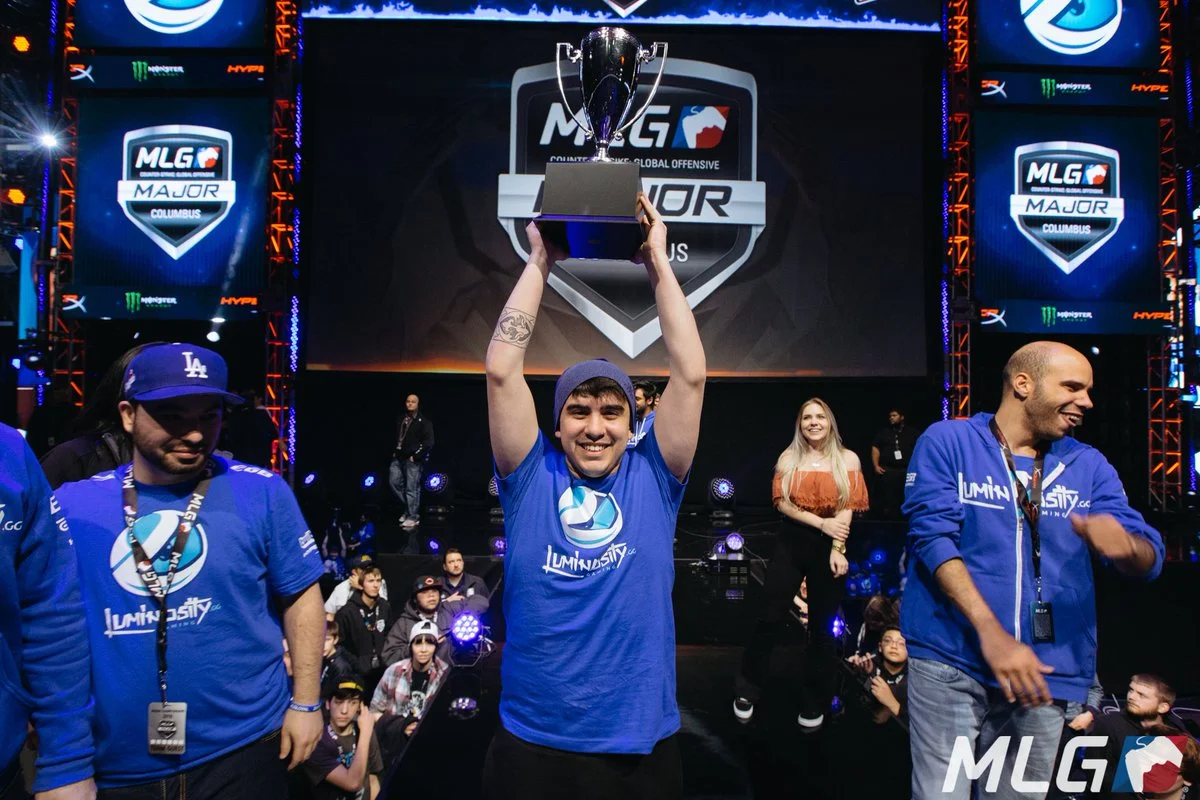

The same Brazilian team took the "gold" again but under the banner of the other club: SK Gaming. And what a highlight Marcelo “coldzera” David gave us, having the honor of graffiti on Mirage! That time, in the finals, s1mple, the future best player of the decade, became the victim of coldzera, and Marcelo himself became the two-time MVP of a major for the first time.
SK Gaming beat Liquid 2-0. Train fell 16-7, with coldzera’s AWP dominance on A site and fer’s rifling, while Cobblestone ended 16-6, driven by boltz’s support and coldzera’s eco-round frags, securing their back-to-back title in a display of Brazilian flair.
Astralis defeated Virtus.pro with a score of 2-1. On Nuke, the score was 16-12 in favor of Virtus.pro. Astralis won Overpass 16-14 thanks to Kjærbye's excellent play, and Astralis won Train 16-14 thanks to the coordinated play of the entire team, starting their dynasty. Kjærbye became the youngest MVP winner at that time.
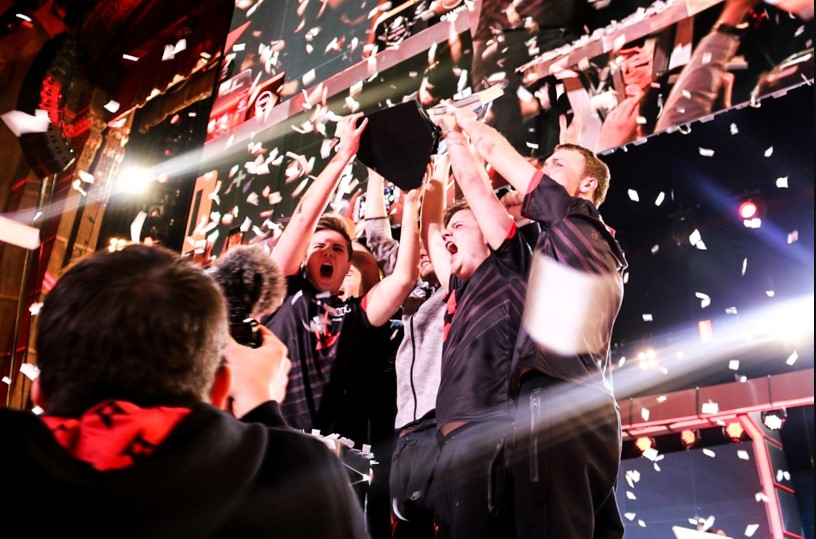
The Krakow Major of 2017 had the most unpredictable outcome because Gambit won it with Daniil “Zeus” Teslenko, who, although they won several tier-2 tournaments then, could hardly compare with the giants of that time. Ultimately, Daniil avenges NAVI for kicking him out of the club, proving he is a capable captain, no matter what anyone says.

The most embarrassing defeat in the major's final can be the failure of FaZe Clan (which won many big tournaments during that period) in the fight against Cloud9. The unfortunate Inferno decisive map prevented GuardiaN from winning at least one Major in his career. On the other hand, after years, North America also won the most prestigious CS:GO competition.
Cloud9 stunned FaZe 2-1. Mirage ended 16-13, with NiKo's support and rain good games, Cloud9 took Overpass 16-10 with Stewie2K’s entries dominance, after Cloud9’s 22-19 Inferno comeback, led by tarik’s clutch AWP shots and Skadoodle’s defuses under pressure, marked a North American milestone.
Also, starting at EL Boston 2018, the Swiss system with the Challengers and Legends stage was fully established.
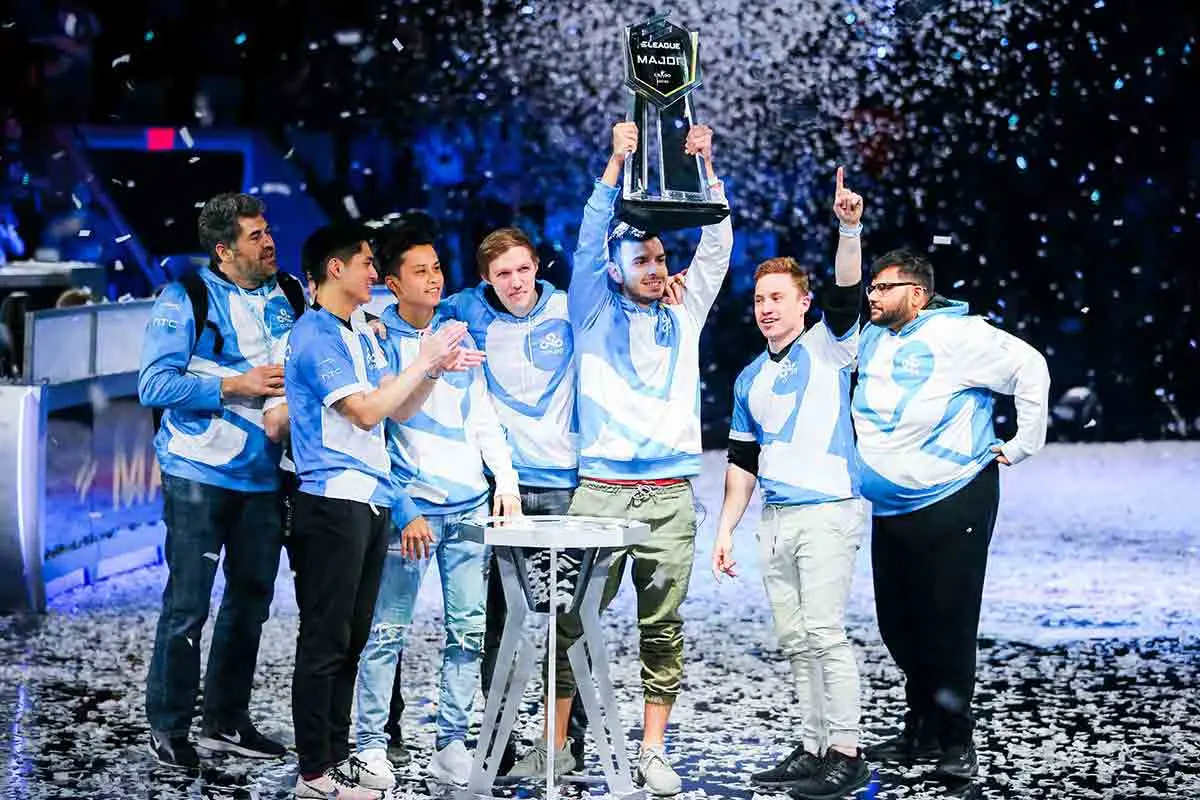
Astralis' victory in the final of FACEIT Major: London 2018 over Natus Vincere officially made the Danish team the best in the world: in terms of titles and level of performance. Nicolai “device” Reedtz was the best player of the major in London.
Astralis crushed NAVI 2-0. Nuke fell 16-6, with device’s AWP dominance and gla1ve’s site setups, and Overpass ended 16-9, thanks to dupreeh’s T-side rushes and Magisk’s perfect game, solidifying their world dominance in a one-sided final.
At FACEIT Major: London 2018, the Danes from Astralis consolidated their leadership on the professional CS:GO scene, which lasted for several more years.
At IEM Katowice Major 2019, Astralis became the champion again. Lukas “gla1ve” Rossander's team seemed to walk through the opponents at the tournament.
Astralis swept ENCE 2-0. Train ended 16-11, with Magisk’s CT-side control and Xyp9x’s smoke screens, and Inferno finished 16-4, driven by gla1ve’s A-site executes and device’s long picks, showcasing their peak synergy against a resilient ENCE squad.
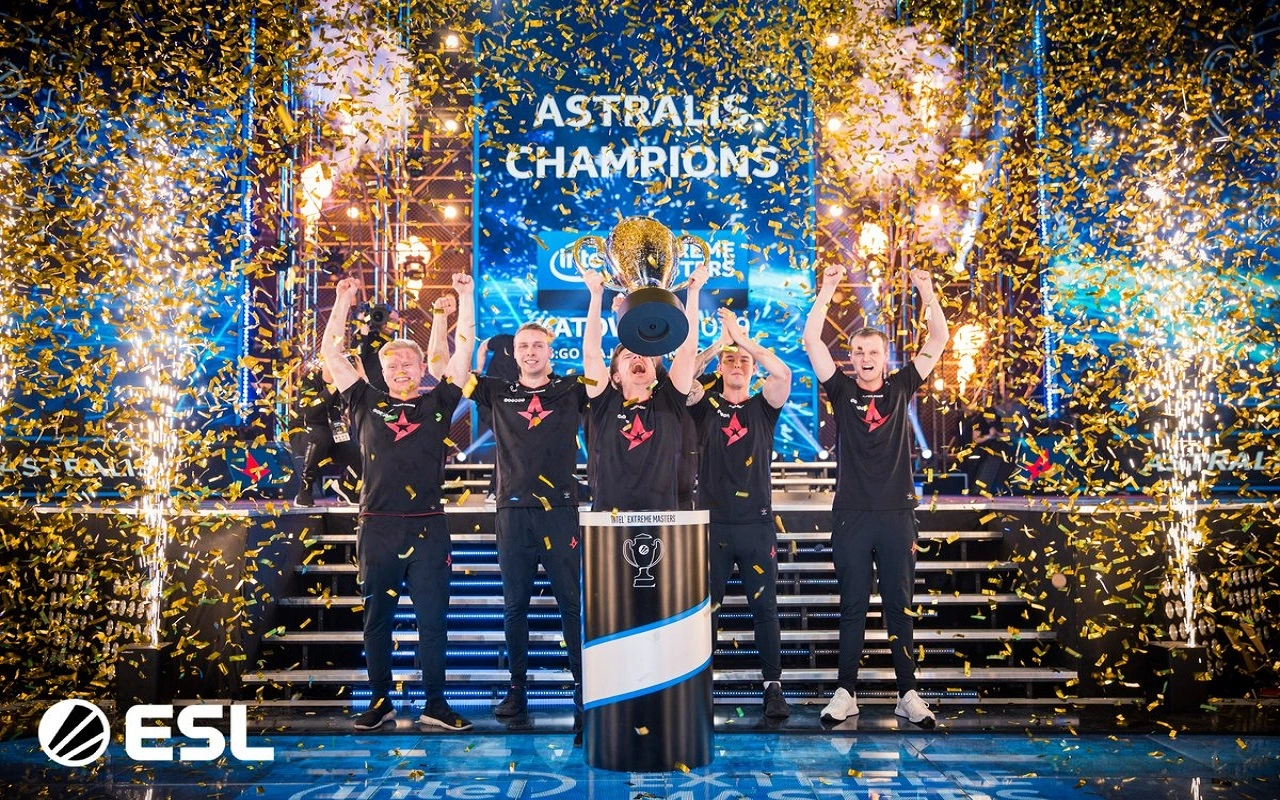

Who knows how many majors the legendary Danish roster would have won if the coronavirus pandemic had not hit next year? The victory in Berlin was the last outstanding achievement of Astralis for many years to come.
Astralis dominated AVANGAR 2-0. Inferno fell 16-6, with device’s AWP frags and dupreeh’s T-side pushes, and Dust II ended 16-5, thanks to Xyp9x’s utility and Magisk’s mid-control, marking their final Major win before the pandemic disrupted their run.
The best player of the championship was once again device, who would later leave the club to return...
NAVI and Olexander “s1mple” Kostyliev, one of the world's best players in the game's history, still needed to manage to win the coveted major. Before Stockholm, the organization made it to the finals three times but usually failed there. But 2021 was a turning point: the arrival of Valery “b1t” Vakhovsky simply transformed the team, and the team won tournament after tournament, becoming the champion of the major and the Intel Grand Slam.
NAVI swept G2 2-0 in a showcase of precision. Ancient ended 16-11, with s1mple’s AWP mastery on A site and electronic’s B-site takes dismantling G2’s defense, while Nuke finished 22-19, highlighted by NiKo’s missed Deagle shot on match point, allowing Perfecto’s clutch to seal NAVI’s long-awaited Major title. NAVI, in turn, won the tournament without losing a single map.
The arena was packed with fans ready to enjoy the PGL Major Antwerp 2022 final between NAVI and FaZe. Both teams demonstrated the closest possible performance on both maps, but in the end. The players gave the audience unforgettable emotions, and in return, the crowd of fans supported the teams with all their might.
FaZe edged NAVI 2-0 in a packed Antwerp arena. Inferno fell 19-16 after a grueling overtime, with rain’s CT-side holds and karrigan’s masterful calls turning back NAVI’s T-side pushes, and Nuke ended 16-10, where rain’s frags and Twistzz’s AWP support outlasted s1mple’s heroics, delivering FaZe’s first Major in a nail-biting finish.
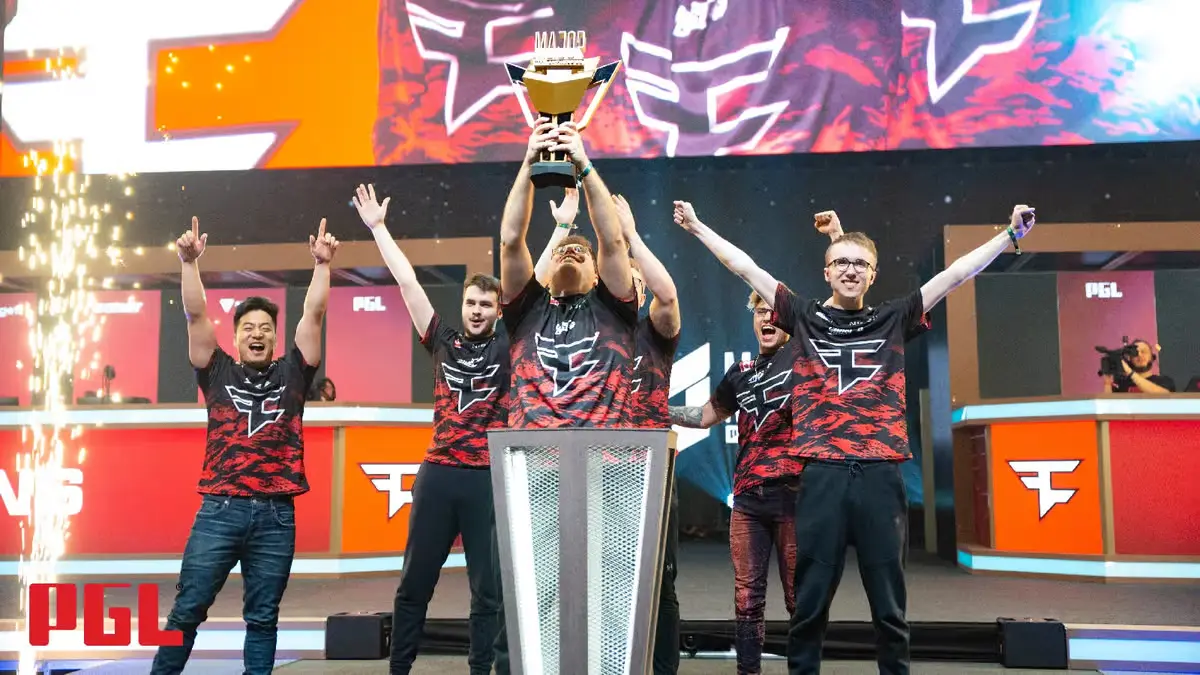

The story of Outsiders in Rio is very similar to the story of Gambit in Krakow. Very few expected the triumph of this tag, but CS:GO can give some surprises. By the way, this was the first and so far the only time South America, or Brazil, hosted a Major. There were questions about the behavior of the fans, but mostly the crowd was enthusiastic and created a great atmosphere.
Outsiders shocked Heroic 2-0 in Brazil’s debut Major. Mirage ended 16-12, with Jame’s T-side entries and Qikert’s mid-control breaking Heroic’s defense, and Overpass finished 16-5, driven by FL1T’s support plays and n0rb3r7’s clutch round wins, thrilling the passionate Brazilian crowd in a historic upset.

As predicted by many, Team Vitality became the champion of the major in Paris. Mathieu “ZywOo” Erbo led his team to the championship throughout the tournament and deservedly received the MVP award. You can read more about it here.
Vitality battled GamerLegion 2-0 in a home-soil epic. Overpass fell 16-6 to Vitality, with ZywOo’s AWP picks and apEX’s site calls dominating early, next Vitality clinched Nuke16-13 in a comeback, where ZywOo’s AWP duels and Spinx’s late-game frags electrified the Parisian crowd.
NAVI triumphed at the PGL Major Copenhagen 2024, defeating FaZe in the final with a score of 2:1. Justinas “jL” Lekavicius became the hero of this championship, finishing the tournament with a rating of 6.7. The Lithuanian player demonstrated the best individual performance at Inferno against FaZe in the decisive match, where he finished with a rating of 8.8, leaving his opponents no chance.
Also worth highlighting is jL's confident play in the playoffs, where he became a key factor in the victory over G2 and Eternal Fire, leading his team to the grand final. This major was the biggest achievement in Justinas' career, and his contribution to NAVI's victory deservedly earned him the title of tournament MVP.


Team Spirit triumphed at the Perfect World Shanghai Major 2024, and Danil “donk” Kryshkovets became the main star of the tournament, receiving the sixth MVP award in his career. The 17-year-old player set a major record for the number of aces with four, surpassing the result of Flamie from IEM Katowice 2019.
donk also equaled s1mple in terms of the number of aces at the Big Events and finished the tournament with a 7.5 rating, dealing 101.36 damage per round. His contribution was key in the semifinals against MOUZ and the final against FaZe Clan, where Spirit won 2-1. This victory cemented donk's status as the brightest young talent on the global CS2 scene.
In this article, we traced the history of the majors, from the first CS:GO tournament in 2013 to the modern CS2 era. From legendary teams like Fnatic and Astralis to outstanding individual talents like s1mple, dev1ce, and donk, these champions and MVPs have become symbols of the highest skill in Counter-Strike. Their achievements have not only changed the esports scene, but have also been etched in the memories of millions of fans around the world.
Upcoming Top Matches
Latest top articles
Comments1